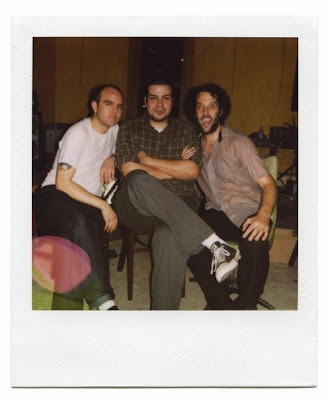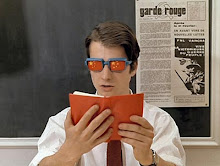Howlin’ Wolf’s early recordings have made the rounds over the years, with my first exposure to them being the swell 12-track collection CADILLAC DADDY: MEMPHIS RECORDINGS 1952, which hit the market from Rounder Records right about the time I graduated high school. I still think that well sequenced disc serves as a fine introduction to the Wolf’s primal pre-Chicago period, but time has seen improvements in the documentation of this essential stuff in completist terms and also that of sound quality. When I first spent time with CADILLAC I was surely pinned against the wall, but also couldn’t help being a bit bummed by the audible damage that time and neglect had inflicted on these sessions. Subsequently, the fine reissue label Ace Records has collected all of the Memphis-era stuff that was released by the Bihari Brothers’ Modern and RPM labels, the latest incarnation of which, HOWLIN’ WOLF SINGS THE BLUES, references in title and cover the 1962 LP on the Bihari’s Crown imprint. That album was the first to compile a portion of those furious sides (and the strange inclusion of two otherwise fine Joe Hill Louis tracks) for consumption by a rough and ready young rock audience. And that updated disc is an indispensible document for understanding the electrification and modernization of the blues, which means that it’s also a vicious vessel of raw grooving. Natch. But brothers and sisters, I’m here to tell you there’s more. The amazing Bear Family label has released two volumes titled MEMPHIS DAYS that assemble all of the unissued material that Sam Phillips and Ike Turner captured in that heady era, documenting a stupendous talent that inspired Phillips to comment "When I heard him, I said, 'This is for me. This is where the soul of man never dies’”. What a sage the guy was. Because yes, there is a certain ineffable eternal energy in these recordings that really bring home the musicological talk of Wolf being a true artistic descendant of Charley Patton. This quality never really left his work, but it did become less pronounced the longer he recorded as one of Chess Records’ blues ambassadors, due in part to the seemingly inevitable streamlining that resulted from commercial success and additionally the quite advanced songwriting and production of Willie Dixon (a contribution that Wolf was often ambivalent about). The Memphis material however can really blindside the unsuspecting listener with its crazed mania, a quality it shares with other Southern electric blues of the period (the Trumpet Records’ material for example), and the wild edge found on these two discs is part of the solid connection to the uncompromising power of the pre-war Delta. But what ultimately makes Wolf the electric heir to Patton isn’t really the rawness of the delivery, it’s the range and depth of his repertoire. Patton is celebrated today in part due to the vastness of his material; he was more than simply a bluesman, existing as a professional live entertainer with the varied songbook that was necessary to keep a crowd of revelers juiced-up into the wee wee hours.
By the time of the MEMPHIS DAYS recordings, Wolf had already understood the importance of diversity. In addition to the hard Delta-core of his stuff, there is also some of the more modern slow moaners that he brought to perfection a few years later (“Getting Old and Grey”), some screwy jump blues inspired material that didn’t seem to survive his transition to Chicago (the fantastic “Oh Red”, with its blunt and loopy horn section), and a whole bunch of what can be described as proto-rock-‘n’-roll. The band that Wolf employed at this point is a big reason why he gets spoken of in the annals of pre-Elvis rock motion. Willie Johnson’s slippery and distorted guitar was effective at any tempo, so the faster numbers on these volumes just drip with the wicked hunching that would inspire explosions all over the continent just a few years hence. Willie Steele’s drum abuse assuredly pops the cork on the bottle labeled insanity, but more importantly he can also hang back when it’s called for (which is quite often), displaying the sort of understated simplicity that’s always been a rare commodity. L.C. Hubert’s piano lands in the fine territory between banging clamor and shrewd finesse, and as such adds much to Wolf’s incredible mixture of old and new. Now, to speak in audiophiliac terms, the sonic upgrade that’s been given to these recordings is a truly wonderful thing. The annoying acetate hiss that seriously marred the opening of “Mr. Highway Man” on CADILLAC is basically imperceptible now. And if you’re worried about high-tech sterilization, don’t be. This digital scrubbing has done nothing to detract from the awesome power of “Moanin’ at Midnight”, a tune I consider to be in the heavy handful of the absolute greatest of electric blues records. If you’re a curious newbie to the Wolf or just aren’t very familiar with his Memphis junk, I’d say grab SINGS THE BLUES first, because that has all the stuff that created the fuss that got this huge dude up the road and swinging from curtains in the Windy City. And if that fires yr coals (and I don’t see why it wouldn’t), you’ll need both volumes of MEMPHIS DAYS like a baby needs a warm nipple. We’re talking serious nourishment here. After that, there are multiple avenues in which to explore the Chess-era, where he had an massive decade-plus streak of artistic quality that only started to run afoul at Marshall Chess’s insistence on “experimenting” and updating his sound in a foolhardy attempt to land a fresh “hip” psychedelic-era audience (a fate that also befell Muddy Waters, although in a less disastrous fashion). The question of which of the Chess Big Two had more of an impact on my teenage life is at this late date impossible to answer. I’d got into Muddy first and then later eased into Wolf, spinning records and having my mind blown in my basement bedroom like the surly outcast I most surely was. By 11th grade I’d found the punk underground; finally I discovered a chunk of contemporaneous youth culture that really spoke to me. In a typically youthful boneheaded move that can only rise from the combination of impatience and poverty, I traded in a truly impressive stack of blues vinyl for a smaller stack of punk stuff, only a couple albums of which I still own. Oh well. By the last month or so before my graduation, I was already quietly regretful over losing my blues stash, and when I stumbled upon a copy of CADILLAC DADDY at my local music shack I impulsively bought the thing even though I didn’t even own a CD player at the time. I then went on a tour of digitally equipped friend’s houses, saying something like “Hey, check out what I have. Wanna hear it?” A few listened and balked, some smiled and taped it and a couple fell right the fuck over. That was a good day, and I’ve had countless good days (and late nights) listening to Chester Burnett since then. The music, like the man himself, is a gigantic presence that transcends the ordinary and continues to display a startling vitality into this young pup of a century. It’s kind of like the guy’s spirit just keeps on keeping on, long after Clapton paid for his tombstone. Damn Sam. You really summed it all up.


















